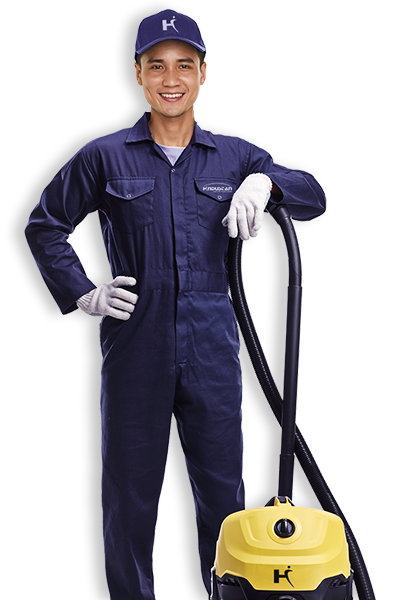New carpet systems (including adhesives used to adhere face fibers to backing materials, carpet cushion, and the adhesives often used to install carpets), like most new interior finishing materials, will off-gas VOCs for a period of time after being installed. These emissions can be significantly reduced, although not completely eliminated, in the first 72 hours through the use of proper ventilation techniques. With any floor covering system, low VOC emission products should be selected and used in school applications.
The Carpet and Rug Institute (CRI) has developed a program known as the CRI Indoor Air Quality Green Label Program (CRI “Green Label”) to determine the level of VOC emissions from carpet, floor adhesives, and cushion products. The CRI Green Label attached to a carpet, floor adhesive, or cushion signifies that a representative sample of the product type has been tested by an independent laboratory and meets the requirements for each program established by CRI. While the CRI program has contributed to significant reductions in the emissions of certain compounds from carpets, it does not necessarily assure that emissions from carpet, floor adhesives, or cushion will not pose problems for some people. More recently CRI has developed Green Label Plus, an enhancement to the CRI Green Label which incorporates additional requirements to meet California’s Collaborative for High Performance Schools (CHPS) low-emitting materials criteria. Products listed as CHPS-compliant materials have been chamber tested to meet the indoor air quality guidelines outlined in California’s specification section 01350. Green Label Plus, in addition, incorporates on-going product testing.
Carpet also acts as a reservoir for dust, dirt, pollen, mold spores, pesticides and other materials which may originate indoors or be brought into the indoor environment from outside. If kept very clean from the time it is installed, carpet can trap a significant amount of particles, which can be removed through regular and effective vacuuming. However, inadequate maintenance can allow large quantities of dust and debris to build up in carpet. Some studies indicate that poorly maintained carpet can release significant quantities of particles into the air during the course of daily activity. In addition, young children may play on carpet where they may be more likely to come into contact with contaminants that have not been properly removed through regular and effective vacuuming.
If covering a large surface area, carpet and other fabrics can act as “sinks” for the adsorption of VOCs from other sources (during application of paint and other finish coatings, for example) and re-emit them later. To minimize the potential for VOCs to be adsorbed from other sources and re-emitted over time, sequence installation of soft surfaces such as carpet as late as possible and/or remove or cover all soft surfaces and use direct ventilation until the coating dries.
It cannot be over-emphasized that proper cleaning and maintenance is a critical component of any flooring system. To help ensure longer life, maintain appearance, and help protect indoor air quality, carpet requires regular vacuuming with a well-functioning vacuum cleaner equipped with strong suction and a high-performance filtration bag and periodic wet extraction cleaning. CRI has established a Green Label Vacuum Cleaner Indoor Air Quality Testing Program to identify vacuum cleaners that effectively remove soil, contain dust within the filtration bag and the machine itself, keeping it out of the air, and which don’t damage the carpet.
Moisture trapped below a carpet (or behind wall coverings or other building components) can result in mold growth and the release of mold spores and mold metabolic products (microbial VOCs or MVOCs) into indoor air. Effective moisture control is critical to protect all building systems from the potential for mold growth. It is essential that concrete be sufficiently cured and dry before carpet is installed over it.
If carpet is specified, select a carpet that:
- has been tested for VOC emissions under the CRI IAQ Green Label Plus testing program can be easily cleaned and maintained
- is constructed to prevent liquids from penetrating the backing layer where moisture under the carpet can result in mold growth
- can be easily removed without the use of toxic chemicals
Where new carpet odor is a concern, require suppliers to unroll and air out carpets in a clean, dry warehouse before bringing them into the building.Specify the least toxic carpet adhesive system compatible with selected carpet product. Require installer to use the smallest amount of adhesive necessary to fulfill the manufacturer’s performance specifications for that product. Alternately, specify tack-down carpet to eliminate gluing. Carpet systems which utilize adhesives may off-gas adhesive constituents through the carpet for extended periods of time.
Air out space(s) where carpet has been installed for a minimum of 72 hours.In renovations, carpet installation should occur only when the school building is not in use. An exception would be for small installations in which the space can be exhausted directly to the outdoors causing the room to be under negative pressure relative to adjacent spaces in the building. Extra exhaust ventilation should continue for a minimum of 72 hours after installation.
Do not install carpet near water fountains, sinks, showers, pools, or other locations where it may get wet.
Follow recommendations from the Carpet and Rug Institute for installation (CRI 104: Standard for Installation of Commercial Carpet).
Follow the carpet manufacturer’s maintenance recommendations. All spills must be cleaned up immediately and thoroughly. If carpet becomes saturated with a clean water spill, extract the moisture and be sure the carpet is dry within 24 hours. Spills of other liquids require immediate extraction and spot cleaning as well as drying within 24 hours.
Source: EPA


